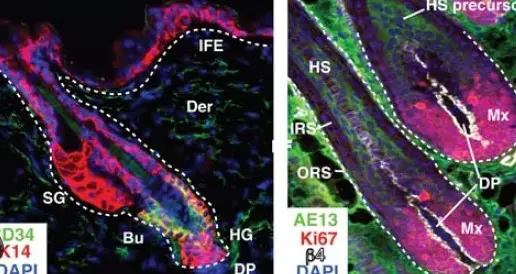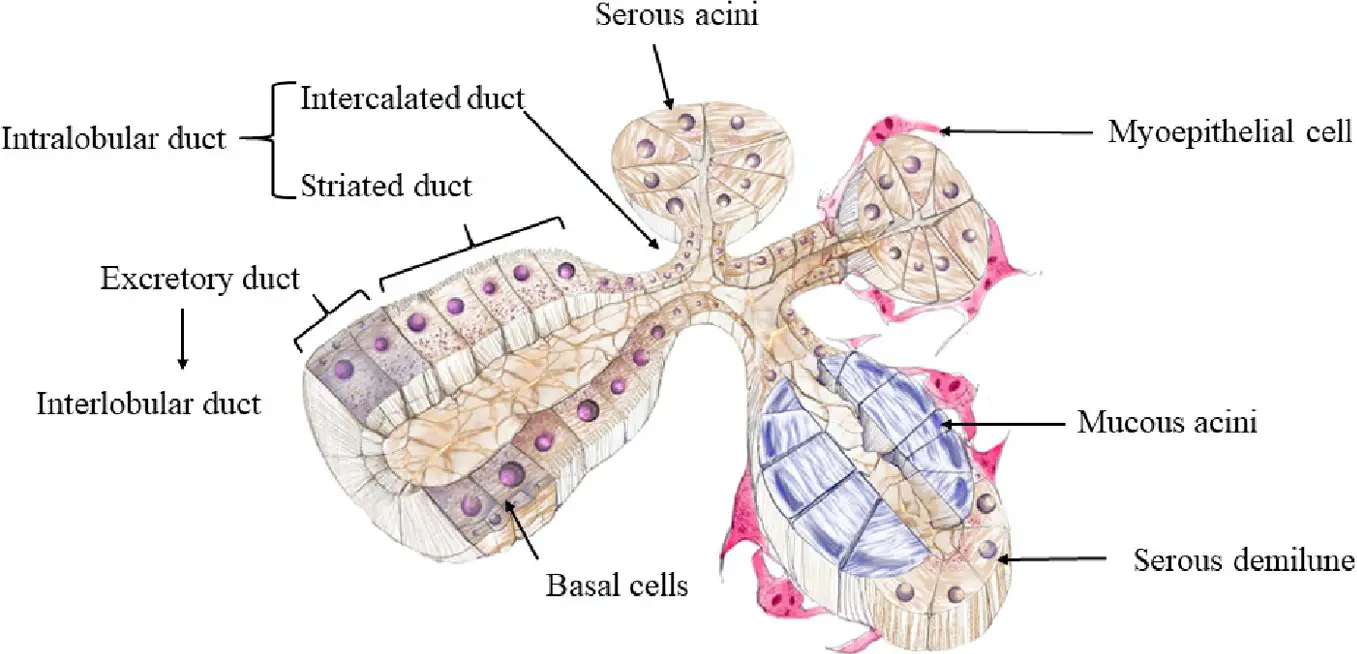Developmental biology unveils the complex orchestration of processes that transform a single cell into a fully formed organism. Among these processes, histogenesis and morphogenesis stand out for their crucial roles in tissue formation and the determination of shape, respectively. These concepts not only fascinate researchers but also have profound implications for medical science and biotechnology.
Histogenesis is the process by which different cell types emerge to form tissues and organs, involving cellular differentiation and organization. Morphogenesis, on the other hand, guides the physical shape of organisms and their parts, directing the spatial distribution of cells. Both processes are integral to understanding how life develops from simplicity to complexity.
The intricate dance between histogenesis and morphogenesis shapes the blueprint of life, dictating how cells differentiate, migrate, and interact to form the diverse anatomical structures seen in nature. This foundational knowledge underpins advances in regenerative medicine, genetic engineering, and our understanding of developmental disorders. As we explore these processes, we uncover the principles guiding the architecture of life itself, from the smallest cellular structures to the grandeur of the animal kingdom.

Defining Histogenesis
Basic Concept
Histogenesis is a fundamental biological process where cells differentiate and organize into distinct tissues. This is where the journey of a single cell, often starting as a stem cell, branches out into multiple pathways leading to the formation of various types of cells, each with a specific function and identity. The essence of histogenesis lies in its ability to create the diverse cellular structures that make up the organs and tissues of living organisms.
Role in Tissue Formation
The role of histogenesis in tissue formation cannot be overstated. It is the foundation of organ development, laying down the blueprint for constructing the complex biological structures necessary for life. Through histogenesis, cells undergo specialization processes that determine their fate as part of the brain, heart, skin, or any other organ. This specialization is critical for the overall functionality and efficiency of organisms, ensuring that each tissue performs its unique tasks within the larger system.
Key Processes
Histogenesis encompasses several key processes, including:
- Cell division: The proliferation of cells through mitosis.
- Cell specialization: Cells commit to specific roles and functions.
- Tissue organization: Specialized cells are arranged into coherent structures.
These steps are meticulously regulated by genetic and environmental factors to ensure the correct formation and functionality of tissues.
Exploring Morphogenesis
Basic Concept
Morphogenesis is the process responsible for the shape and structure of organisms and their parts. It orchestrates the arrangement and physical layout of cells to form the characteristic forms seen in nature. Morphogenesis is not just about the aesthetics of biological forms but also about functionality, ensuring that each structure is optimally designed for its specific role within the organism.
Role in Shape Formation
Morphogenesis plays a pivotal role in determining the physical form of living beings, from the simplest organisms to the most complex. It is the architect behind the symmetrical layout of a leaf, the streamlined shape of a fish, and the complex structure of the human brain. Each of these shapes is not only beautiful but also serves a specific function, whether it’s efficient nutrient absorption, swift movement through water, or intricate processing of information.
Key Mechanisms
Several mechanisms drive morphogenesis, including:
- Cell growth: Differential growth rates contribute to shape.
- Cell migration: Cells move to specific locations.
- Apoptosis: Programmed cell death shapes structures by removing cells.
These mechanisms are guided by genetic instructions and influenced by the cellular environment, ensuring that morphogenesis achieves precise outcomes.
Comparative Analysis
Histogenesis vs. Morphogenesis
While histogenesis and morphogenesis are both crucial for developmental biology, they focus on different aspects of biological formation. Histogenesis is concerned with the origin and development of tissues from differentiated cells, whereas morphogenesis deals with how these tissues arrange themselves to form the overall shape and structure of the organism.
Interdependence and Distinctions
Despite their differences, histogenesis and morphogenesis are interdependent. The differentiation of cells during histogenesis sets the stage for their subsequent organization into structures through morphogenesis. However, the distinction lies in their focus: histogenesis on the cellular and tissue level, and morphogenesis on the physical and structural level.
How Both Processes Interact
The interaction between histogenesis and morphogenesis is a dance of cellular activity that leads to the fully formed organism. Histogenesis provides the building blocks—differentiated cells tailored for specific functions. Morphogenesis arranges these blocks into the complex structures that define the organism’s form and function. This collaboration ensures that every part of the organism is both well-made and well-placed.
Histogenesis Details
Phases of Histogenesis
Histogenesis unfolds through several phases:
- Proliferation: Cells multiply to provide a sufficient quantity for tissue formation.
- Differentiation: Cells develop specific features and functions.
- Organization: Differentiated cells assemble into structured tissues.
These phases are sequential yet overlapping, each critical for the successful development of tissues.
Cellular Differentiation
At the heart of histogenesis lies cellular differentiation, a process where cells evolve from a state of potential to a state of specialization. This involves:
- Gene expression: Specific genes are turned on or off.
- Morphological changes: Cells acquire distinct shapes and structures.
- Functional specialization: Cells adopt unique roles.
Through differentiation, a stem cell can become a neuron, a muscle cell, or any other cell type, each contributing to the organism’s complexity and functionality.
Examples in Human Development
Histogenesis is evident throughout human development, from the formation of the neural tube that becomes the central nervous system to the differentiation of mesenchymal stem cells into the bones and muscles of the skeletal system. These examples highlight the critical role of histogenesis in shaping not only the physical attributes of humans but also their capacities and health.

Morphogenesis Details
Phases of Morphogenesis
Morphogenesis, the process that shapes organisms and their structures, unfolds through several distinct phases:
- Initiation: This phase marks the beginning of shape formation, where cells start to exhibit differences in their positions or fates, setting the stage for the complex shapes to come.
- Elongation and Shaping: Cells undergo changes in shape and size, contributing to the overall form of the organism or organ. This phase is crucial for the development of the specific outlines that distinguish different biological structures.
- Finalization: Here, the structure becomes more refined and detailed, with cells and tissues completing their arrangements to finalize the organism’s shape.
These phases work together seamlessly, guided by genetic and environmental cues, to create the intricate and functional forms observed in nature.
Pattern Formation
Pattern formation is a critical aspect of morphogenesis, involving the spatial organization of cells and tissues into specific arrangements. This process relies on signaling molecules and genetic instructions to ensure that each cell knows its place and role within the emerging pattern. Examples include the stripes on a zebra, the arrangement of leaves around a stem, or the symmetric features of a human face. Pattern formation ensures that biological structures are not only functional but also aesthetically coherent.
Examples in Plant and Animal Kingdom
Morphogenesis manifests vividly across the plant and animal kingdoms:
- Plants: In plants, morphogenesis is evident in the development of leaves, flowers, and roots. The arrangement of petals in a flower or the branching pattern of a tree are classic examples of morphogenesis at work, contributing to both the function and beauty of these organisms.
- Animals: In the animal kingdom, morphogenesis is observed in the development of body plans, such as the bilateral symmetry of humans or the segmented bodies of insects. The formation of the vertebrate limb, with its complex arrangement of bones, muscles, and tendons, is a remarkable example of morphogenesis.
Key Factors Influencing Both
Genetic Control
Genetic control is paramount in both histogenesis and morphogenesis, providing the blueprint for the development and organization of tissues and structures. Genes encode the information necessary for cell differentiation and the establishment of patterns within tissues, guiding the developmental processes from the molecular level upwards.
Environmental Factors
Environmental factors play a significant role in shaping developmental outcomes. Temperature, nutrition, and physical forces can influence the direction and rate of cell growth and differentiation, affecting both histogenesis and morphogenesis. For example, the external environment can determine the thickness of fur in animals or the timing of flowering in plants.
Signaling Pathways
Signaling pathways are the communication networks that cells use to coordinate their actions during histogenesis and morphogenesis. These pathways involve hormones, growth factors, and other signaling molecules that guide cells in their division, differentiation, and spatial arrangement. The precision of these signaling pathways ensures the successful formation of complex biological structures.
Practical Implications
Medical Applications
The principles of histogenesis and morphogenesis are directly applicable to various medical fields, including tissue engineering and regenerative medicine. By understanding how tissues form and organs take shape, scientists and doctors can develop strategies for repairing or replacing damaged tissues, opening new avenues for the treatment of diseases and injuries.
Research and Biotechnology
In research and biotechnology, the insights gained from studying histogenesis and morphogenesis are instrumental in advancing genetic engineering, stem cell research, and the development of artificial organs. These areas rely on the ability to manipulate cellular behavior and organization, aiming to replicate or modify natural developmental processes for therapeutic purposes.
Future Directions in Regenerative Medicine
Regenerative medicine stands on the cusp of revolutionizing healthcare, with histogenesis and morphogenesis at its core. Future directions include:
- Organ regeneration: Developing methods to regenerate damaged organs using stem cells, guided by the principles of histogenesis and morphogenesis.
- Tissue engineering: Creating functional tissues for transplantation, relying on scaffolds that mimic the extracellular matrix and provide cues for cell differentiation and organization.
- Personalized medicine: Tailoring treatments based on an individual’s genetic makeup, optimizing the regenerative capabilities of their cells.
FAQs
What is Histogenesis?
Histogenesis refers to the biological process through which cells differentiate and organize into specialized tissues and organs. This process is pivotal in the embryonic development of all multicellular organisms, laying the groundwork for the complex structures that constitute living beings.
How Does Morphogenesis Differ from Histogenesis?
While histogenesis focuses on the formation of tissues from differentiated cells, morphogenesis is concerned with how these tissues come together to form the overall shape and structure of an organism. It involves the spatial distribution of cells and tissues, contributing to the physical form and architecture of the organism.
Why are Histogenesis and Morphogenesis Important?
Histogenesis and morphogenesis are fundamental to developmental biology, as they explain how organisms develop from a single cell into complex, structured entities. Understanding these processes is crucial for advances in medical science, particularly in areas like tissue engineering, regenerative medicine, and the treatment of congenital anomalies.
How do Environmental Factors Influence Histogenesis and Morphogenesis?
Environmental factors, including physical forces, chemical gradients, and interactions with surrounding cells, play a significant role in both histogenesis and morphogenesis. These factors can influence cell differentiation, migration, and the formation of structures, impacting the development and morphology of the organism.
Conclusion
Histogenesis and morphogenesis are cornerstone concepts in developmental biology, offering insights into the biological processes that drive the formation and structuring of life. These processes underscore the complexity and beauty of biological development, highlighting the intricate mechanisms that enable cells to form tissues, organs, and ultimately, organisms.
As we advance our understanding of these fundamental processes, we pave the way for groundbreaking applications in medicine, biotechnology, and beyond. The exploration of histogenesis and morphogenesis continues to illuminate the paths through which life evolves, offering a glimpse into the masterful ways nature constructs the living world from the microscopic to the macroscopic.

